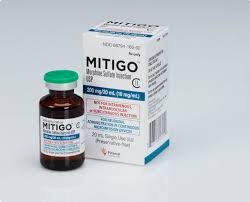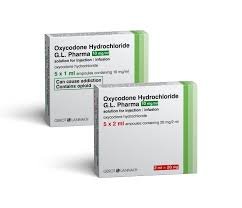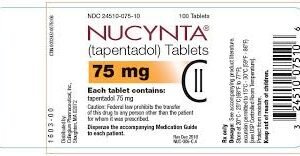Description
Mitigo: Overview, Uses, and Benefits
Mitigo is a medication used primarily in the treatment of opioid dependence and addiction. It is often part of a comprehensive treatment program that includes medical supervision, counseling, and support for individuals who are struggling with opioid use disorder (OUD). Mitigo helps to prevent withdrawal symptoms, manage cravings, and reduce the risk of relapse. By providing a controlled and safer alternative to illicit opioids, it helps patients maintain stability and work toward long-term recovery.
In this article, we will explore the composition, uses, mechanism of action, benefits, and precautions associated with Mitigo.
Composition of Mitigo
Mitigo typically contains buprenorphine, an opioid partial agonist, as the active ingredient. Buprenorphine is a medication that helps manage opioid addiction by partially activating opioid receptors in the brain, providing relief from withdrawal symptoms without causing the intense high associated with full agonist opioids like heroin or prescription painkillers. Buprenorphine is often used in combination with naloxone, an opioid antagonist, to reduce the potential for misuse of the medication.
The medication is available in various forms, including:
- Tablets (for sublingual or buccal administration)
- Film strips
- Injectable formulations
- Transdermal patches
The exact formulation and strength of Mitigo will depend on the specific product and manufacturer.
Common Uses of Mitigo
Mitigo is primarily used in the treatment of opioid use disorder (OUD), a condition characterized by the compulsive use of opioids despite harmful consequences. It is a part of a comprehensive treatment plan that includes both medical and psychosocial interventions to help individuals recover from opioid addiction.
1. Opioid Use Disorder Treatment
Mitigo (buprenorphine) is a key medication in the management of opioid use disorder. The treatment works by reducing the withdrawal symptoms and cravings that often make it difficult for individuals to stop using opioids.
- Buprenorphine works as a partial opioid agonist, meaning it activates the opioid receptors in the brain but to a lesser extent than full agonist opioids like heroin or morphine. This helps alleviate cravings and withdrawal symptoms without producing the intense euphoria that leads to abuse.
- Naloxone, when included in the formulation, acts as an opioid antagonist and helps to deter misuse. If the medication is injected or misused in other ways, naloxone can trigger withdrawal symptoms, discouraging individuals from taking the medication improperly.
Mitigo helps patients stabilize their condition by providing a controlled, safer way of managing opioid dependence. It is typically taken daily as part of an opioid maintenance therapy program.
2. Pain Management
While Mitigo is primarily used for opioid addiction treatment, buprenorphine may also be prescribed off-label for managing moderate to severe pain, particularly for individuals with a history of opioid addiction. In these cases, buprenorphine can offer pain relief while reducing the risk of misuse and the severe side effects associated with full opioid agonists.
Mechanism of Action
Mitigo contains buprenorphine, a partial opioid agonist that works by binding to opioid receptors in the brain and spinal cord.
- Partial Agonism at Opioid Receptors:
- Buprenorphine partially activates opioid receptors, specifically the mu-opioid receptor, which is responsible for pain relief, mood elevation, and other opioid effects. Because it is only a partial agonist, it produces less euphoria and a reduced risk of abuse compared to full agonist opioids (e.g., heroin or morphine).
- Ceiling Effect:
- One of the key characteristics of buprenorphine is its ceiling effect. This means that after a certain dose, taking more of the medication will not produce an increased effect (such as euphoria). This property reduces the risk of overdose compared to full agonist opioids.
- Naloxone Inclusion:
- In combination formulations, naloxone is included to help prevent misuse. Naloxone is an opioid antagonist, which means it blocks the effects of opioids. If Mitigo is taken as prescribed, the naloxone remains inactive. However, if the medication is misused (e.g., injected), naloxone will block the opioid effects and can cause precipitated withdrawal, further discouraging misuse.
Benefits of Mitigo
- Effective in Managing Opioid Addiction:
- Mitigo provides significant benefits in the treatment of opioid use disorder, reducing cravings and withdrawal symptoms, and lowering the risk of relapse. It allows patients to focus on recovery without the constant battle of opioid cravings or painful withdrawal.
- Reduced Risk of Misuse:
- The combination of buprenorphine and naloxone in Mitigo formulations reduces the potential for misuse. The ceiling effect of buprenorphine and the inclusion of naloxone makes Mitigo less likely to cause euphoria, thus making it a safer option compared to full agonist opioids.
- Long-Acting Effects:
- Buprenorphine has a long half-life, which allows for once-daily dosing, making it more convenient for patients. It provides consistent therapeutic effects and reduces the need for frequent dosing.
- Improved Quality of Life:
- By stabilizing the patient’s opioid dependence, Mitigo helps individuals regain control of their lives. Many people in treatment experience fewer disruptions in daily life, allowing them to maintain regular employment, rebuild relationships, and engage in therapy and counseling for long-term recovery.
- Less Risk of Overdose:
- Due to the ceiling effect and partial agonism, Mitigo has a lower risk of overdose compared to full agonist opioids, even if taken in higher amounts. This safety profile is particularly important for individuals recovering from opioid addiction.
Side Effects of Mitigo
Like all medications, Mitigo can cause side effects, some of which can be serious. Common side effects of buprenorphine include:
- Common Side Effects:
- Headache
- Nausea and vomiting
- Constipation
- Fatigue or drowsiness
- Sweating
- Dizziness
- Mouth numbness (especially with the sublingual or buccal form)
- Serious Side Effects:
- Respiratory depression: Although less likely than with full agonist opioids, respiratory depression (slow breathing) can still occur, especially if Mitigo is misuse or take with other CNS depressants like alcohol or benzodiazepines.
- Liver problems: Buprenorphine may cause liver damage, so individuals with liver conditions should be closely monitor.
- Allergic reactions: Severe allergic reactions, including rash, itching, swelling, and difficulty breathing, can occur.
- Overdose: Although the risk of overdose is lower with buprenorphine compare to other opioids, it is still possible, especially if Mitigo is misuse.
Precautions and Considerations
- Risk of Addiction and Dependence:
- While Mitigo is use to treat opioid addiction, it is still an opioid medication and carries a risk of dependence and misuse. Therefore, it should only be use as part of a comprehensive treatment plan under the supervision of a healthcare provider.
- Drug Interactions:
- Mitigo can interact with other medications, particularly those that affect the central nervous system (CNS). Benzodiazepines, alcohol, and other CNS depressants can increase the risk of respiratory depression and overdose when use together with Mitigo.
- Pregnancy and Breastfeeding:
- Buprenorphine should be used during pregnancy only if the benefits outweigh the risks, as it may cause neonatal withdrawal symptoms in the baby. Buprenorphine passes into breast milk, so caution is advised for breastfeeding mothers.
- Liver or Kidney Disease:
- Patients with liver or kidney problems should be monitored closely, as Mitigo is metabolized in the liver and excreted in the kidneys.
- Misuse Prevention:
- To reduce the potential for misuse, patients using Mitigo should be educated about its proper use and closely monitored by healthcare providers.
Conclusion
Mitigo is an important medication for the treatment of opioid use disorder, helping patients manage withdrawal symptoms, reduce cravings, and improve their chances of long-term recovery. It offers several benefits, including its long-acting effects, reduced risk of misuse, and convenient dosing. However, like all opioids, it carries the risk of dependence, overdose, and side effects.






Reviews
There are no reviews yet.